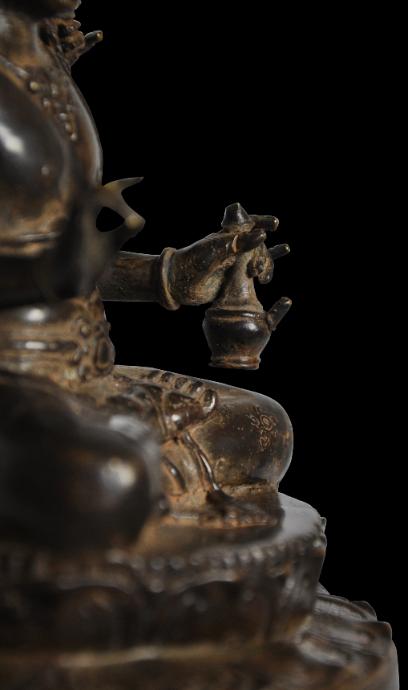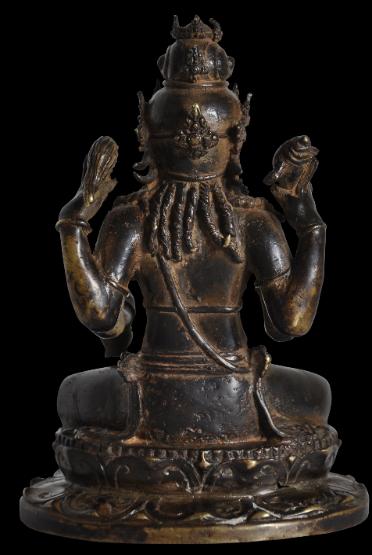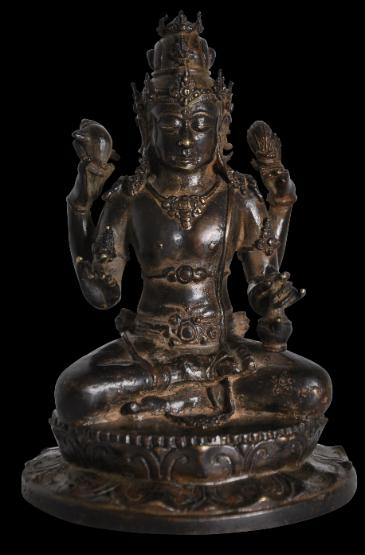
Javanese Bronze Shiva
Bronze Image of Shiva Mahdewa
Eastern Java, Indonesia
15th century
height: 17cm
This finely cast Javanese representation of Shiva Mahdewa (‘Shiva the Supreme God’) represents the very end of the Majapahit Hindu-Buddhist tradition of casting bronze images, just prior to the Islamicisation of Java in the sixteenth century. Prior to then, Hinduism, as well as Buddhism, had developed a distinctly Indonesian character in which many of the deities of the Indian pantheon had been re-interpreted. Shiva was the principal deity among those who followed Hinduism on Java.
The image shows a typically Javanese rendering of Shiva seated cross-legged on a lotus dais. Shiva has four arms three of which hold attributes: a fly whisk, a conch shell, and a holy water
kendi-like vessel. The fourth hand might once have held a detachable rosary.
The water vessel held by the image is typically Javanese. Many full-sized examples cast in bronze have been excavated. They seem to have been used in Javanese Hindu rituals.
Shiva is dressed in royal attire and amply and finely decorated with jewels. The image is embellished with jewelled a waist band, a stomach band, a large necklace, bracelets and armlets and a tall, tiered crown. Long strands of twisted hair fall down the image’s back from beneath the headdress.
The bronze has been subjected to X-ray fluorescent analysis by Oxford Labs in the UK and determined to have a metallic alloy composition that is consistent with results of Southeast Asian 15th-16th century copper-alloy artefacts.
References
Fontein, J., et al, The Sculpture of Indonesia, National Gallery of Art, Washington, 1990.
Kartiwa, S. (ed.),
Treasures of the National Museum, Jakarta, Buku Antar Bangsa, 1997.
Lerner, M. & S. Kossak,
The Lotus Transcendent: Indian and Southeast Asian Art from the Samuel Eilenberg Collection, The Metropolitan Museum of Art, New York, 1991
Provenance
UK art market
Inventory no.: 2584
SOLD




